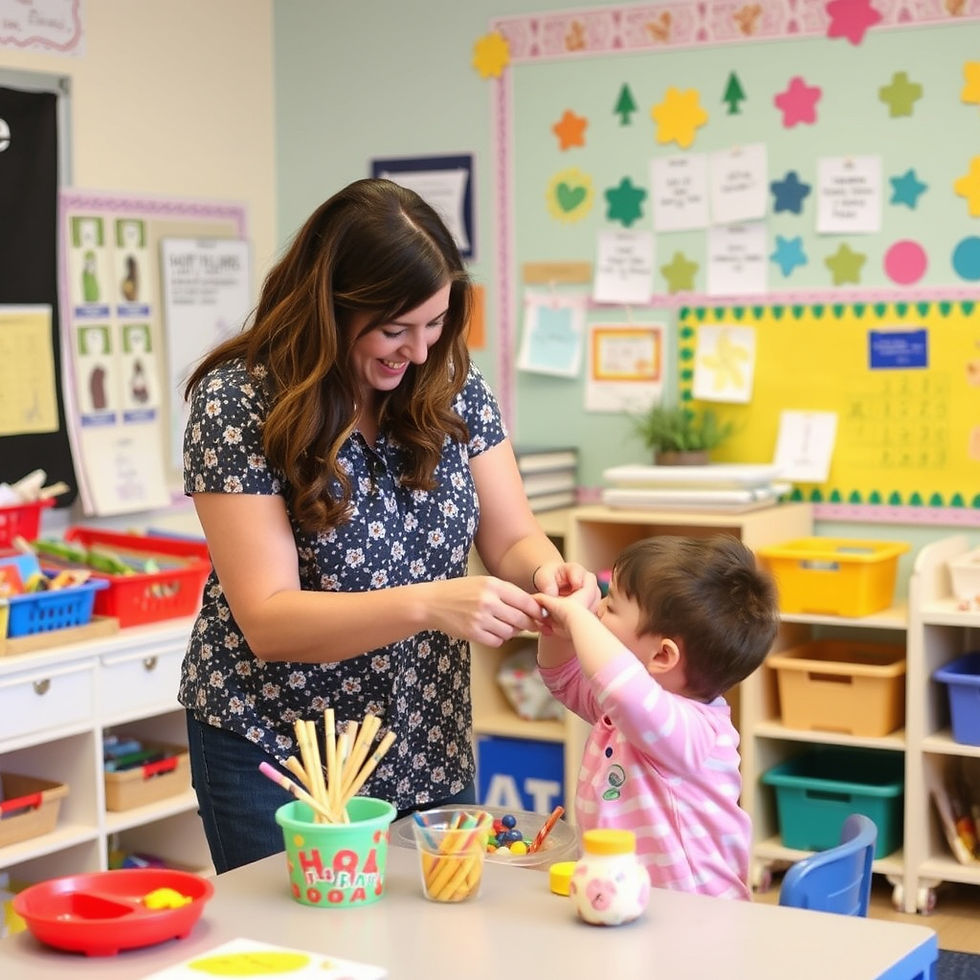Uncovering the Unexpected Influence of Nursery Rhymes on Early Childhood Learning
- Wild About Learning

- Mar 23
- 4 min read
The significance of nursery rhymes in early childhood education is often underestimated. These short, catchy verses are not merely entertaining; they serve as powerful tools in cognitive, social, and emotional development for young children. Through engaging rhythms, playful language, and memorable melodies, nursery rhymes subtly influence learning while establishing a strong foundation for various skills.
The Role of Rhythm and Rhyme in Language Development
One of the standout features of nursery rhymes is their rhythmic and rhyming structure. The beat not only captures children's attention but also aids in phonemic awareness—the ability to hear, identify, and manipulate sounds in spoken language.
When children listen to rhymes, they begin to recognize patterns in sounds, which is essential for learning to read. Studies have shown that early exposure to nursery rhymes can significantly enhance phonological skills, making it easier for children to grasp complex language concepts later on.
Cognitive Benefits of Nursery Rhymes
Beyond language development, nursery rhymes contribute to children's cognitive growth. The repetitive nature of these verses makes them easier to memorize and recall, which helps improve memory skills. When children sing along to familiar rhymes, they practice sequencing and comprehension, reinforcing their ability to understand narratives.
Additionally, nursery rhymes often introduce children to various themes, vocabulary, and concepts, enriching their understanding of the world. For example, stories embedded in rhymes may touch upon numbers, shapes, animals, and emotions, making learning both fun and relatable.
Social and Emotional Connections
Nursery rhymes also play an essential role in developing social and emotional skills in young children. Many rhymes involve themes of friendship, sharing, and community, which encourage children to recognize and express their feelings. When children engage in singing or reciting rhymes together, they participate in social interactions that promote cooperation and bonding.
Furthermore, these songs often contain characters and narratives that children can relate to, fostering empathy and emotional intelligence. This connection further helps them navigate their own feelings and those of others, laying the groundwork for healthy relationships as they grow.
Promoting Physical Development through Movement
Many nursery rhymes incorporate actions or movements, which contribute to early physical development. For instance, songs like "The Wheels on the Bus" include hand gestures and motions that coordinate with the lyrics, promoting fine and gross motor skills.
Engaging in physical activity while singing nursery rhymes fosters a sense of rhythm and body awareness. It also allows children to express themselves in a fun and dynamic way, thereby increasing their overall engagement and enjoyment during learning sessions.
A Multi-sensory Approach to Learning
The experience of nursery rhymes is inherently multi-sensory. Children not only listen to the sounds but often engage visually through illustrations in storybooks or video adaptations. This multi-sensory approach enhances learning by stimulating various cognitive pathways, making the information more memorable.
By integrating visuals, sounds, and movements, nursery rhymes create a rich learning environment that caters to different learning styles. This adaptability makes them a versatile tool in early childhood education, supporting auditory, visual, and kinesthetic learners alike.
Cultural Significance of Nursery Rhymes
Nursery rhymes often reflect cultural values and traditions, providing children with a sense of heritage and belonging. By introducing various nursery rhymes from different cultures, educators can broaden children's horizons and foster an appreciation for diversity.
Understanding cultural references within nursery rhymes can also enhance children's critical thinking and analytical skills as they learn to interpret contexts and meanings beyond the surface level. This awareness lays the groundwork for developing a global perspective as they grow older.
Incorporating Nursery Rhymes in the Classroom
Educators and caregivers can leverage the benefits of nursery rhymes by incorporating them into daily routines. Simple practices like starting the day with a rhyme, using them during playtime, or integrating them into lessons can enhance learning experiences.
Creating a comfortable and inviting atmosphere for singing and storytelling allows children to engage fully and feel safe expressing themselves. Additionally, utilizing hand motions, visual aids, and props can bring nursery rhymes to life, making them even more impactful.

Technology and Nursery Rhymes
In this digital age, technology can also play a role in the modern adaptation of nursery rhymes. Interactive apps, animated videos, and online resources make nursery rhymes more accessible than ever. These platforms provide engaging ways to explore the rhythm and language of nursery rhymes while catering to the interests of contemporary learners.
However, it’s important for parents and educators to monitor screen time and ensure that digital content aligns with educational goals. Balancing traditional methods with technology can help reinforce the cultural and literary importance of nursery rhymes while also keeping children engaged.
Conclusion: The Lasting Impact of Nursery Rhymes
In conclusion, nursery rhymes are far more than simple childhood entertainment. They serve as fundamental tools in early childhood education, fostering language and cognitive skills while strengthening social and emotional connections.
From promoting phonemic awareness to encouraging physical development and cultural understanding, the magic of nursery rhymes is undeniable. As we continue to explore their impact, we must embrace the lessons they offer and integrate them into our teaching practices, ensuring that children can benefit from this invaluable resource.

Incorporating nursery rhymes into education is not just about preserving tradition; it’s about nurturing a new generation of learners who are equipped with essential skills for the future. So, the next time you hear a familiar tune, remember—there’s magic in those rhymes!




Comments